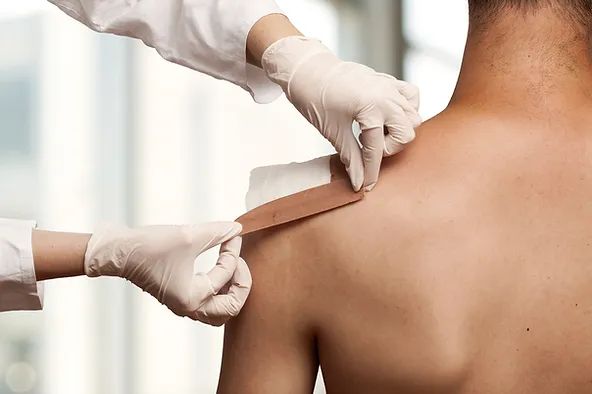Before we discuss shoulder instability, what’s shoulder stability? Shoulder stability is the ability to maintain the humeral head (ball on the end of the upper arm bone) in the glenoid fossa (socket on the end of the shoulder blade). The glenoid fossa has a rim of tissue that surrounds it, known as the glenoid labrum. The labrum increases the depth of the joint cavity and provides approximately 50% of the shoulder’s stability.
The joint itself is surrounded by a loose fibrous sheath called a capsule. The capsule is reinforced by ligaments and muscles which connect the humeral head into the glenoid fossa. This is how the remainder of the joint’s stability is achieved – by static and dynamic stabilisers. The static stabilisers are the superior, inferior and middle glenohumeral ligaments. While the dynamic stabilisers are the four rotator cuff muscles, the long head of biceps, deltoid, pectoralis major and teres major.
Shoulder instability stems from changes in the mechanical integrity of the joint. The humeral head slips out of the glenoid cavity as a result of weakness in the rotator cuff or a blow to the shoulder. Instability can be traumatic or atraumatic. Traumatic instability most commonly occurs due to trauma, and results in an anterior dislocation. It is usually unidirectional and is more common in males. Atraumatic instability can be congenital (laxity of structures at birth) or can be due to chronic recurrent instabilities (microtrauma over time). It is often multidirectional and more common in females.
A subluxation is a partial or incomplete dislocation. The difference with a shoulder dislocation is that the humeral head ‘pops’ back into the socket. A dislocation can occur in three directions – anterior, posterior or inferior. Anterior dislocations occur due to a direct blow or fall on an outstretched arm. Individuals are most susceptible at 90 degrees of abduction and external rotation and these account for 95% of all dislocations.
Posterior dislocations account for 2-4% of all dislocations and are easily missed due to less displacement. They occur most commonly due to an external blow to the anterior shoulder resulting in an indirect force to the humerus combining flexion, adduction and internal rotation. Inferior dislocations are uncommon and are associated with vascular and neurologic complications.
Pathologies associated with instability include SLAP tears, Bankart lesions and Hill-Sachs lesions. A SLAP lesion is a tear of the superior labrum, usually centred at the long head of biceps origin, and it can extend to the anterior and posterior labrum. It can occur due to a sudden forceful traction on the long head of biceps, such as catching a heavy item. A forward fall on an outstretched arm, in which a subluxating humeral head shears off a portion of the labrum or with repetitive overhead motion. Bankart lesion is the most common lesion that results from a complete traumatic anterior dislocation and is a direct result of the anteriorly dislocated humeral head compressing against the labrum.
A detachment of the labrum, typically between the 3 o’clock and 6 o’clock positions. A Hill-Sachs lesion is a compression fracture or dent of the posterosuperolateral humeral head that occurs in association with anterior instability or dislocation of the glenohumeral joint. It is seen in 75-100% of individuals with anterior instability.
To assess for instability, laxity and provocative tests are undertaken. Common provocative tests include; apprehension test, relocation test and release test. While laxity tests include; load and shift, sulcus and posterior subluxation test. To confirm diagnosis, MRI, X-ray, Ultrasound and CT are commonly used.
In individuals with instability there are some absolute and relative indications for surgery. Absolute include; >50% Rotator cuff tear, Glenoid defect >20%, Hill-Sachs lesion >25%, concomitant fracture requiring surgery, irreducible dislocation, failed rehab/recurrent instability with attempted return to sport. Relative indications include; > 2 dislocations in the same season, participation in overhead/contact sports, injury at the end of season with insufficient rehab time, >13.5% glenoid bone loss, bony Bankart lesions and Age <20 years.
If you wish to treat a shoulder pain, or are worried you may be developing problems mentioned above, come in and see our fantastic physiotherapist in Kew, or for an assessment, call (03) 9568 1011 or book online at www.alignhc.com.au.

